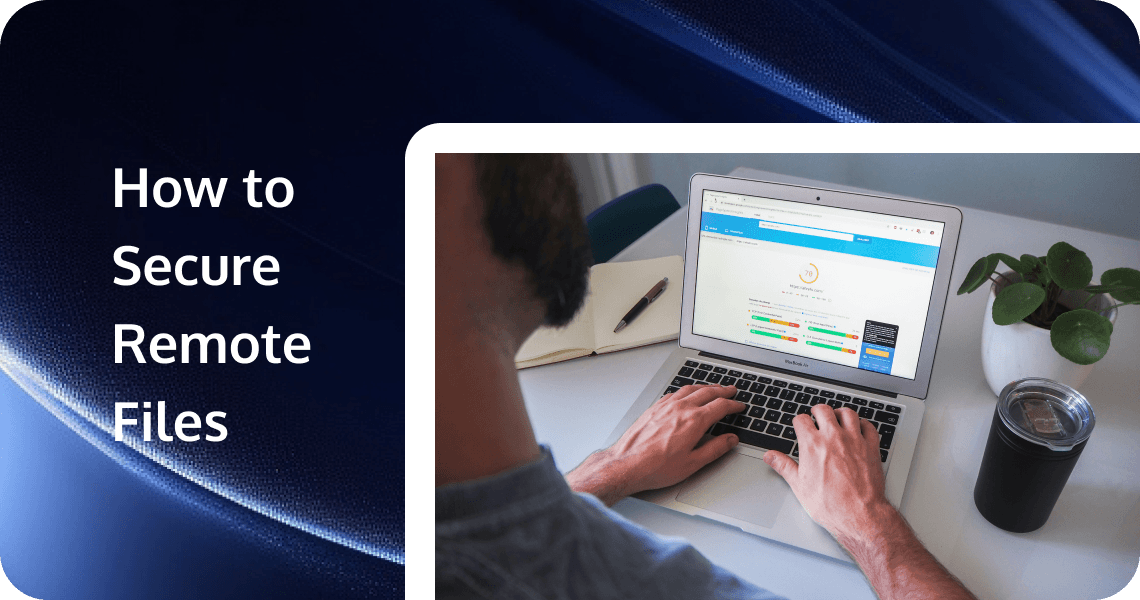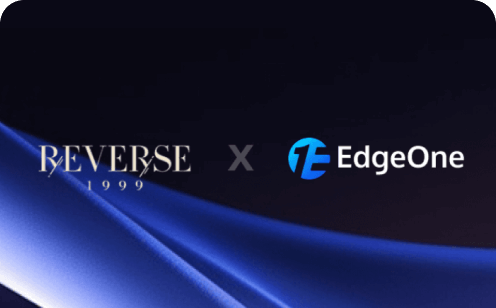Securing Remote Files: Best Practices and Strategies in the Digital Era

In the modern digital era, remote work and digital collaboration have become the norm for many organizations and individuals. The COVID-19 pandemic accelerated this shift, making it essential for businesses to adapt to a remote-first environment. However, this transition also brought significant challenges, particularly in terms of data security. Ensuring the security of remote files is crucial, as compromised data can lead to financial losses, reputational damage, and legal consequences. This article aims to provide an overview of remote file security, highlight key threats and challenges, and offer practical solutions and best practices to protect sensitive data.
What is Remote File Security?
Remote file security refers to the measures and practices implemented to protect digital files stored or accessed remotely. This includes files stored in cloud storage services, remote servers, or accessed through virtual private networks (VPNs). The scope of remote file security encompasses various aspects, such as data encryption, access control, regular backups, and monitoring.
Definition and Scope
Remote file security is not limited to just preventing unauthorized access; it also involves ensuring the integrity and availability of data. Files stored in the cloud or accessed remotely are vulnerable to a range of threats, from cyberattacks to human errors. Understanding the different types of remote files and their storage locations is essential for implementing effective security measures.
Key Components of Remote File Security
- Data Encryption: Encrypting data ensures that even if files are intercepted, they remain unreadable without the decryption key. Encryption should be applied both to data at rest (stored files) and data in transit (files being transferred).
- Access Control and Authentication: It is critical to control who can access remote files. Multi-factor authentication (MFA) and role-based access control (RBAC) are effective methods for ensuring that only authorized personnel can access sensitive data.
- Regular Backups and Disaster Recovery: Regular backups ensure that data can be restored in case of loss or corruption. A robust disaster recovery plan is essential to minimize downtime and data loss.
- Monitoring and Auditing: Continuous monitoring of file access and changes helps detect and respond to suspicious activities promptly. Regular audits ensure that security measures are up-to-date and effective.
Common Threats to Remote File Security
Remote file security faces numerous threats, ranging from sophisticated cyberattacks to simple human errors. Understanding these threats is the first step in developing a robust security strategy.
1. Cyber Threats
- Malware and Ransomware Attacks: Malicious software can encrypt files and demand a ransom for their release. Regularly updating software and using anti-malware tools can mitigate this risk.
- Phishing and Social Engineering: Cybercriminals often use phishing emails and social engineering tactics to trick employees into revealing sensitive information or granting unauthorized access.
- Insider Threats: Employees or contractors with access to sensitive files may pose a risk, either intentionally or accidentally. Implementing strict access controls and monitoring can help mitigate this threat.
2. Human Errors
- Accidental Data Leaks: Employees may inadvertently share sensitive files or store them in insecure locations. Regular training and awareness programs can help reduce such incidents.
- Weak Passwords and Poor Security Practices: Weak passwords and failure to follow security protocols can lead to unauthorized access. Enforcing strong password policies and promoting good security practices are essential.
3. Technological Vulnerabilities
- Outdated Software and Systems: Using outdated software can expose vulnerabilities that cybercriminals can exploit. Regular updates and patches are crucial for maintaining security.
- Insecure Network Connections: Unsecured Wi-Fi networks and outdated VPNs can allow unauthorized access to remote files. Using secure, encrypted connections is essential.
- Third-Party Service Risks: Third-party services and applications used for remote file storage or collaboration may have their own vulnerabilities. Conducting thorough security assessments of these services is important.
Best Practices for Remote File Security
Implementing effective security strategies is crucial to protect remote files from potential threats. Here are some practical solutions and best practices:
1. Implementing Strong Encryption
Encryption is a fundamental component of remote file security. It ensures that even if data is intercepted, it remains unreadable without the decryption key. Organizations should use strong encryption algorithms and ensure that both data at rest and data in transit are encrypted. Tools like AES-256 and TLS can provide robust encryption for files and network connections.
2. Strengthening Access Control
- Multi-Factor Authentication (MFA): MFA adds an extra layer of security by requiring users to provide multiple forms of verification before accessing sensitive files. This can include something they know (password), something they have (a mobile device), or something they are (biometric data).
- Role-Based Access Control (RBAC): RBAC ensures that users have access only to the files and resources necessary for their job functions. Regularly reviewing and updating access permissions helps maintain the principle of least privilege.
- Regularly Reviewing and Updating Access Permissions: Periodically reviewing access permissions ensures that only authorized personnel have access to sensitive files. This is especially important when employees change roles or leave the organization.
3. Secure Network Practices
- Using Secure VPNs for Remote Access: VPNs provide a secure, encrypted connection for remote workers. Organizations should use reputable VPN providers and ensure that VPN software is up to date.
- Implementing Firewalls and Intrusion Detection Systems: Firewalls and intrusion detection systems (IDS) help protect networks from unauthorized access and detect suspicious activities. These tools should be configured to block known threats and alert administrators of potential breaches.
- Ensuring Secure Wi-Fi Connections: Employees should use secure, password-protected Wi-Fi networks. Public Wi-Fi networks should be avoided or used with additional security measures like VPNs.
4. Employee Training and Awareness
- Educating Employees About Cybersecurity Best Practices: Regular training sessions can help employees understand the importance of cybersecurity and how to protect sensitive data. Topics should include recognizing phishing emails, using strong passwords, and avoiding suspicious links.
- Conducting Regular Security Training Sessions: Security training should be an ongoing process, with regular updates to cover new threats and best practices. Simulated phishing attacks can help reinforce training and identify areas for improvement.
- Encouraging a Culture of Security Within the Organization: Promoting a culture of security encourages employees to take an active role in protecting sensitive data. This can include reporting suspicious activities and following security protocols.
5. Regular Audits and Updates
- Conducting Periodic Security Audits: Regular security audits help identify vulnerabilities and ensure that security measures are effective. Audits should cover all aspects of remote file security, including encryption, access control, and network security.
- Keeping Software and Systems Up to Date: Regular updates and patches are essential to address known vulnerabilities and improve security. Organizations should have a process in place to ensure that all software and systems are up to date.
- Implementing Patches and Updates Promptly: Promptly implementing patches and updates helps minimize the window of opportunity for cybercriminals to exploit vulnerabilities.
Technology Solutions for Remote File Security
1. Virtual Private Networks (VPNs)
VPNs create encrypted tunnels for remote workers to securely access corporate resources. Modern enterprise VPN solutions offer features like split tunneling, automatic connection on untrusted networks, and integration with authentication systems.
2. Secure Cloud Storage Platforms
Enterprise cloud storage solutions from providers like Microsoft, Google, and Box offer robust security features including encryption, detailed access logs, and compliance certifications that can form the foundation of a secure remote file system.
3. End-to-End Encrypted File Sharing Services
Services that provide end-to-end encryption ensure that files remain encrypted from the moment they leave the sender's device until they're decrypted on the recipient's device, preventing interception even by the service provider.
4. Security Information and Event Management (SIEM) Systems
SIEM solutions aggregate and analyze security data from across the network, helping security teams identify unusual file access patterns or potential breaches involving remote workers.
5. Data Loss Prevention (DLP) Tools
DLP technologies monitor and control file transfers, preventing sensitive information from being inappropriately shared or leaked through remote connections, email, or cloud services.
Compliance and Regulatory Considerations
GDPR, HIPAA, CCPA, and Other Relevant Regulations
Remote file security must address various regulatory requirements depending on the organization's location and industry. The General Data Protection Regulation (GDPR), the Health Insurance Portability and Accountability Act (HIPAA), and the California Consumer Privacy Act (CCPA) all have specific provisions that affect remote data handling.
Industry-Specific Compliance Requirements
Financial organizations may need to comply with PCI DSS for payment data, while government contractors might need to meet CMMC or FedRAMP requirements. These specialized compliance frameworks often have explicit provisions for remote access.
Documentation and Audit Trails
Maintaining comprehensive logs of file access, modifications, and transfers is essential for both security monitoring and regulatory compliance. These audit trails provide evidence of compliance and are invaluable during security investigations.
Data Sovereignty Issues
The physical location of data becomes complex in remote work scenarios. Organizations must consider data sovereignty laws that may restrict where certain types of information can be stored or processed, particularly when remote workers are in different countries.
Future Trends in Remote File Security
AI and Machine Learning in Threat Detection
Artificial intelligence is revolutionizing remote file security by identifying unusual access patterns or potential threats that might evade traditional security measures. These systems can learn normal user behaviors and flag anomalies that may indicate compromise.
Blockchain for Secure File Verification
Blockchain technology offers promising applications in file integrity and authenticity verification, creating immutable records of document histories that can prove invaluable in highly regulated industries.
Biometric Authentication Advancements
As biometric technologies become more sophisticated and widely available on consumer devices, they'll play an increasing role in securing remote file access through fingerprint, facial recognition, and even behavioral biometrics.
Edge Computing Security Implications
The growth of edge computing brings both challenges and opportunities for remote file security, potentially allowing for more processing to occur closer to the user while requiring new security approaches for these distributed environments.
How to Protect Your Data with Tencent EdgeOne
Tencent EdgeOne is an integrated edge computing platform that combines content delivery, security, and edge computing capabilities into a unified service designed to protect organizational data. Built on Tencent Cloud's global infrastructure, EdgeOne provides comprehensive protection for web applications, APIs, and digital content while simultaneously improving performance. By routing traffic through Tencent's secure network, organizations can defend against various cyber threats without sacrificing user experience or adding complex management overhead.
Tencent EdgeOne provides comprehensive data protection through its integrated edge computing platform:
- DDoS Protection: Guards against distributed denial-of-service attacks using Tencent's global infrastructure
- Web Application Firewall (WAF): Defends against OWASP Top 10 vulnerabilities, including SQL injection and XSS
- Zero Trust Security: Implements identity-aware access controls and continuous authentication
- Global Threat Intelligence: Automatically blocks known malicious IPs and emerging threats
- Data Loss Prevention: Inspects and masks sensitive information to prevent data leakage
- Unified Management: Simplifies security through a single dashboard for monitoring and configuration
- Performance Optimization: Processes security checks at the edge to reduce latency while maintaining protection
Sign up and start a free trial with us!
Conclusion
The remote file security landscape continues to evolve as new threats emerge and technologies advance. Forward-thinking organizations are embracing zero-trust architectures, leveraging AI for threat detection, and implementing continuous monitoring to protect their valuable data assets regardless of where they're accessed.
The investment in robust remote file security not only protects against costly data breaches but also enables organizations to confidently embrace the flexibility and productivity benefits of remote work. By following the best practices outlined in this article, organizations can build a secure foundation for their distributed workforce while maintaining compliance with evolving regulatory requirements.

